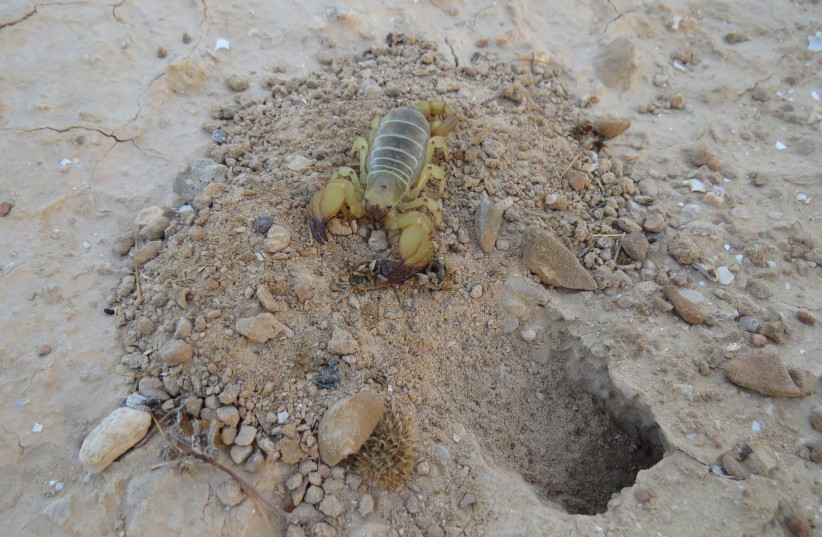Gender roles and housekeeping among tiny desert creatures called desert isopods are unusual. Better known as woodlice, they mate only once in their lifetime and spend the rest of their year-long life with their chosen partner and their family of 60 to 70 offspring in a single permanent burrow.
There are more than 10,000 identified species of isopods worldwide, with some 4,500 species found in marine environments (mostly on the seabed), 500 in fresh water and another 5,000 species on land. The fossil record of isopods dates back at least 300 million years to when isopods lived in shallow seas.
The females that live on solid ground initially dig the burrow, and the males fight to win a particular female and a particular habitat. Females brood their young in a pouch under their thorax. Both parents take care of the brood, and all family members – young and old – continue to dig and clean the burrow together.
Choosing where to establish a home is the responsibility of the females. Both genders grow up to two centimeters in length (4/5ths of an inch), with segmented bodies, two pairs of antennae, five pairs of five pairs of branching appendages on the abdomen that are used for breathing, and seven pairs of legs. Under normal conditions, the largest males usually win the largest females.
In courtship, once the females adopt a burrow, they are ready to admit a male. Peeping out from the top of the burrow, males and females encounter each other face to face – probably using the separation between the eyes of their prospective mate to assess size. Males compete furiously over the larger females in hopes of producing a large brood.

They might not make the top of the list of cutest animals, but experts insist they actually fascinating animals and ideal to study when looking at mating preferences. But what happens when there is a predator, such as an Israeli gold scorpion, living nearby?
A study of this scenario was carried out in the Negev Desert by a Hebrew University of Jerusalem research team led by Prof. Dror Hawlena and Dr. Viraj Torsekar. They observed the mating behavior of male desert isopods in two locations – one close to the burrow of an Israeli gold scorpion, which is a risky area, and one further away, which is a safe area.
“This information is crucial in predicting how the fear of a predator may affect prey population dynamics and evolutionary processes in the creation of new species.”
Dr. Viraj Toreskar
The environment is a factor
Their findings, recently published in the journal Ecology under the title “Predation risk regulates prey assortative mating by reducing the expected reproductive value of mates,” showed that preference of large males among larger females in safe areas but less so for large females in risky areas.
“Using this manipulative field experiment, we found that desert isopods under risk of scorpion predation maintained ‘size assortative mating,’ but that males that chose and fought over females were on average smaller for a given female size,” Torsekar explained. While bigger males stayed longer near safe burrows and won more male-male contests, fewer pairs were formed in risky sites.
The researchers also showed that the smaller males had often accepted second best and moved in with smaller females close to the lurking scorpion. Medium-sized males choose between smaller females in safe places and larger females in risky places, demonstrating an equal fitness choice.
“This supported our novel hypothesis that the males anticipated the future risk of predation,” Torsekar said. “The males seemed to incorporate information on the proximity of a predator when choosing a mate. They no longer made their selection based solely on the size of the female, although larger females do have larger broods.”
Digging into the dry, compacted desert soil is tough going for the females, so they are always on the lookout for holes that can make life a little easier.
The Hebrew University researchers dug holes in two groups, one near the burrow of an Israeli gold scorpion and one further away. Female isopods readily adopted the holes and excavated full-size burrows, but fewer isopod pairs settled down in burrows near predators even though it was virtually free real estate.
The authors explained that the predatory behavior of scorpions is localized to the immediate vicinity around their burrows. They don't go wandering off to look for prey but emerge only to attack prey that is detected by the vibrations created by the isopods as they walk across the burrow roof. However, the odor of the scorpion does alert isopods when they are near its lair.
